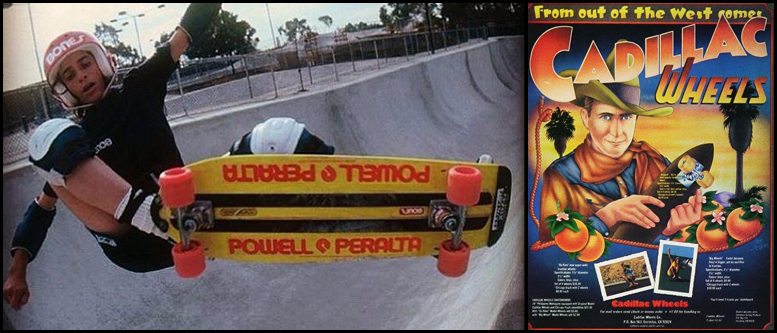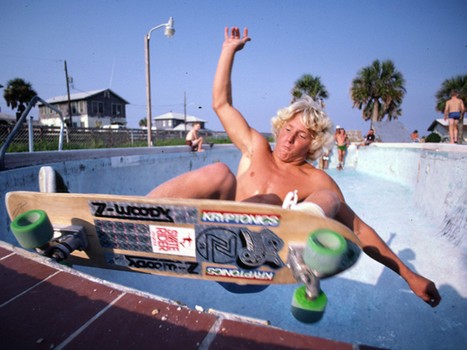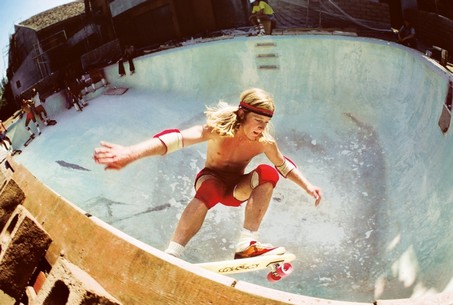
1970's The Evolution & Revolution
Then like all things, in a moment, everything changed for skateboarding. The invention of urethane wheels by Frank Nasworthy in 1972 made it possible for skateboarding to make its comeback. He started the company Cadillac Wheels and with the new material it was possible to ride smoother, faster and more comfortable.

In 1975 skateboarding got the boost it needed. In Del Mar, California a slalom and freestyle contest was held at the Ocean Festival and skateboarding was taken from being a hobby to something serious and exciting. A variety of disciplines such as freestyle, downhill and slalom experienced a real high point. New magazines like the "Skateboarder Magazine" from 1975 were published and new events were launched.

In 1976, the first artificially created skate park was inaugurated and new parks emerged with new elements such as vertical ramps and kickers. Skateparks were specially designed places that catered to skateboarders. They had obstacle courses, pools (empty bowls, usually below ground level like an empty pool), and pipes (large, circular type) to challenge skateboard riders. With skateparks also came more competition, recognition, and sponsorship. At the end of the 1970s skateboarding took another hit when these public skateparks that were being built suffered from the outrageously high insurance rates due to the danger factor of skateboarding.

Then in 1978 Alan Gelfand (nicknamed "Ollie") invented a maneuver that gave skateboarding another revolutionary jump. He would slam his back foot down on the tail of his board and jump, thereby popping himself and the board into the air. The ollie was born, a trick that completely revolutionized skateboarding.

By the end of the 1970s, Due to the amount and severity of the injuries, skateparks closed in fear of lawsuits and the sport returned underground. Skateboarding again became controversial after it became identified as antisocial behavior.
